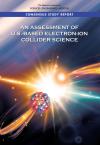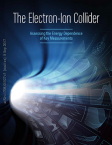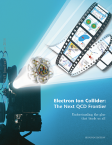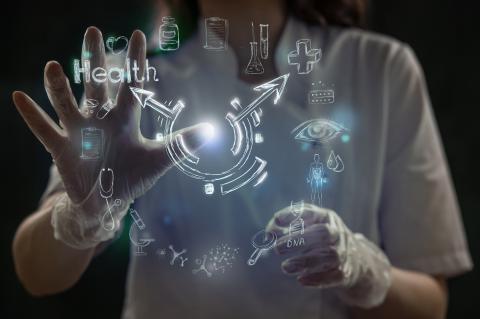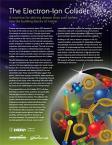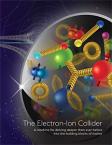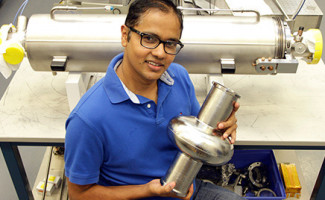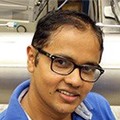Finding his home in Physics
For seven years, Pashupati Dhakal has walked the same halls at Jefferson Lab, yet he can’t help but smile with pride as he opens doors revealing the exciting cutting-edge technology, describing the science happening in and around it.
“We have made a lot of progress,” Dhakal said. “Now we’re trying to make it even better. Nothing is perfect, but we’re trying to get closer to the perfectness.”
The “it” Dhakal refers to is superconducting radio frequency cavities and the fundamental understanding of the performance limitations. His excitement, as well as the excitement of his colleagues, is palpable.
Seven years ago, Dhakal was finishing his thesis defense at Boston College when he typed into an internet search: “Condensed matter physics job in Virginia.” He was specifically looking for a warm weather climate when he found a job posting for a post-doctoral fellow- not too far from the Atlantic Ocean - that intrigued him.
“The position opening was exactly what I was doing my Ph.D. in,” Dhakal said. Plus, being located in Newport News, “it had warm weather,” he said, with a laugh.
Searching for answers in math and science
Dhakal was born in Nepal, a central Himalayan country in South Asia. He grew up the eldest son of the village’s school principal and attended school six days a week. Math and science were his favorite subjects.
“You have to earn it,” Dhakal said of finding answers in math and science. “It’s thinking and practice, and it’s more about practice.”
Dhakal carried that work ethic with him throughout his undergraduate and graduate studies at Tribhuvan University, where he graduated at the top of his class and received a gold medal from Gyanendra Shah, then king of Nepal.
The life work of a researching scientist
Now, as a Staff Scientist II, Dhakal, who came to America in 2004, works with a team of scientists and technical staff to design experiments that assist other researchers in the applied physics field.
“We have a project in mind: what we want to accomplish in the next three months, six months or a year,” Dhakal explained.
Figuring out how to tackle this project is Dhakal’s daily work: reviewing the latest research and literature; planning experiments with a coordinated team; running experiments to isolate, determine or overcome problems; analyzing the data; reporting the findings and, finally, deciding how to move forward. This often means repeating experiments.
“If it is physics, [the finding] always repeats. If there is something else, it may not repeat,” Dhakal said, restating something his Ph.D. advisor once said to him that he’ll never forget.
Mentors paved the way
Dhakal’s journey to become a Jefferson Lab scientist is overflowing with stories of mentors like his Ph.D. advisor Professor Michael J. Naughton and Jefferson lab, supervisor Dr. Gianluigi Ciovati. First, his father taught him that education begins at home. Then, his younger brother, who went on to become a chemist, stood by his side throughout his childhood.
“If we needed to go outside to get something, we’d go together every time,” Dhakal said. “That was our thing.”
Dhakal’s grandfather, who welcomed Dhakal and his brother to live with him in order to be closer to their high school, further endorsed and assisted Dhakal’s opportunity for education.
“If I didn’t have my grandfather’s house close to my high school, you never know what would have happened,” Dhakal said.
Following his family’s influence, Dhakal found a particularly impactful mentor in physics during his undergraduate studies, where he originally thought he would pursue engineering. When he speaks of his undergraduate professor, the energy in his voice increases revealing his gratitude.
“He was the first motivation for me to study physics,” he said, recalling his professor’s contagious passion. “When he was teaching physics, I felt like I knew everything about physics. When you were sitting in his class, you really wanted to learn physics.”
This was the moment he committed to physics.
“And I’ve never regretted that decision,” He said.
Collaborative teams produce results
The collective impact of Dhakal’s upbringing, family encouragement, enlightened professors and mentors left an imprint on Dhakal. He understood it takes a team of minds and abilities to achieve incredible outcomes.
On the research and development team, Dhakal recognizes the importance of everyone’s expertise.
“This isn’t a one-man band,” He says.
He is part of a team that designs experiments ranging from small, daily experiments that take as little as 4-12 hours, to week-long, extensive experiments.
Right now, they are on a quest to find more efficient and less costly ways to accelerate particles. Building on Jefferson Lab’s success using superconducting radiofrequency technology, Dhakal and his colleagues are exploring alternative designs and manufacturing processes for the SRF technology that underlies particle accelerators. Cheap and efficient accelerators can benefit organizations with interests ranging from the production of electricity to cures for cancer.
The benefit to society
Dhakal, who grew up in a village without electricity, understands the importance and potential of his research, but he also understands the financial hurdle involved.
“Right now, these machines are expensive,” Dhakal said. “We have to find a way to make it cheaper so that everyone can benefit from it.”
When Dhakal decided to pursue physics, he knew he wanted to work in a field that could benefit society. His position with Jefferson Lab offered him the opportunity to use applied physics, while also being a part of something that could be used by other people, he said.
Growing up in a society with limited resources, Dhakal felt what it meant to be community-oriented. “Now, I’m in a position where I can do something and be a part of society,” Dhakal said. He is not only reading the research and literature, but “we get to do the work,” he said, his eyes lighting up at the thought of experiments.
A Father and Sports Fan
A New England Patriots fan and a husband and father of two with a sense of humor, Dhakal let his six-year-old daughter, Swarupa, choose the name for his infant son. She chose Sayan. He smiled with pride at the mention of his family. When he’s not taking his daughter to enjoy a pizza smothered with pineapples, Dhakal enjoys his research and experiment-based work at Jefferson Lab.
“Every day is new things,” Dhakal said. “Every day, when I do the experiment, I’m really excited whether I’m going to get what I want or what I’m hoping I’m not.”
With that excitement, however, comes waiting. “It doesn’t happen overnight,” he said. “It takes time and patience.” During his time at Jefferson Lab, Dhakal has completed hundreds of experiments, authored and co-authored over 40 articles, and he has been invited to speak at more than a dozen conferences.
This life is exactly what he hoped for: warm weather, loving family, and working in physics where he can impact society.
He pauses when asked how he wants to be remembered.
“I just want to do something where I have some contribution in this field,” Dhakal said. Looking around, thinking of the experiment he’ll design today, Dhakal said with a smile, “I’ve done it.”
December 2017





